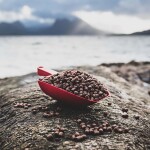It looked like another Market Basket bargain: a 1.5-pound bag of mackerel fillets for USD 3.69. But the package contained more than 2 ounces of ice.
An enticing offer at Save-A-Lot turned out to be an even worse deal. Ice accounted for nearly three of the 19 ounces of squid tubes going for USD 3.79 at the discount grocery store.
Both watered-down packages came from the Henry Gonsalves Co., a Rhode Island food supplier that repeatedly sold underweight frozen fish to local supermarket chains, according to a Boston Globe investigation. About two-thirds of the Gonsalves fish tested weighed less than the package label indicated.
The underweight seafood from Gonsalves is part of a persistent problem in the industry, though the company says any mislabeling is unintentional. Typically, frozen seafood is coated with ice to keep it fresh and minimize freezer burn. Some businesses in the supply chain add extra ice and include it in the weight declared on the label. Retailers end up charging for the water, and shoppers pay more money for less fish.
While individual shoppers are shortchanged in small increments, cumulatively, excess water in seafood is a serious issue, said Lisa Weddig of the National Fisheries Institute, a Virginia-based trade organization.
“Rather than looking at this as USD 0.30 here and USD 0.30 there, we should be looking at this as a USD 69 billion seafood industry and these practices could be costing the industry and consumers tens, if not hundreds, of millions of dollars in the end,” Weddig said.
The National Oceanic and Atmospheric Administration, which runs a seafood inspection program, said it finds economic fraud in at least 40 percent of products voluntarily submitted to the agency for testing by processors and other businesses. At least eight out of 10 cases involve inaccurate weights, according to Steven Wilson, chief quality officer of NOAA’s seafood inspection program.
A Globe survey of 43 seafood samples from supermarkets across Massachusetts showed about 1 in 5 glazed with ice weighed less than the net weight stated on the label, which is supposed to exclude packaging and glaze. For example, scallops sold at a Walmart store weighed roughly 13 ounces, not the 16 ounces listed. Crab meat at Kyler’s Catch in New Bedford, labeled as 6 ounces, weighed 5 ounces. The newspaper hired an independent lab to weigh the fish after removing the glaze.





